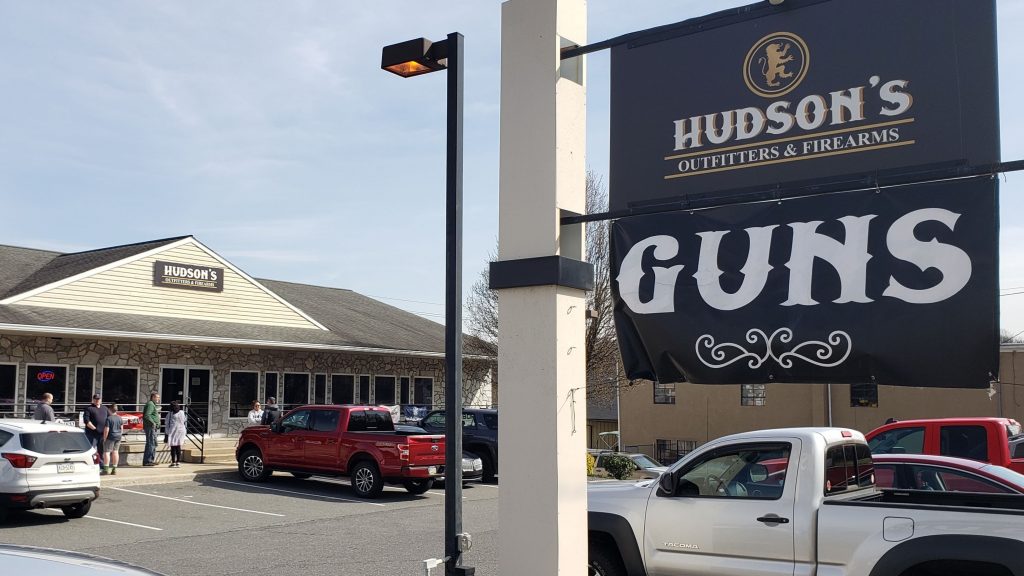This week I published a big story on the Gun Makers Match. It is one of the most in-depth pieces I’ve done since launching The Reload and I think it gives a lot of insight into the growing community of homemade gun makers. It’s exactly the kind of on-the-ground reporting on an under-covered group of gun-owners that I started this publication to produce.
If you haven’t already read the piece, I hope you’ll check it out and give me some of your feedback. And I hope you’ll read my member-exclusive post on my personal experience at the match.
In addition to the big piece, I’ve also got several analysis pieces for you guys. The first is about President Biden’s new silver-bullet strategy to arrest the climbing murder rate and the problems with it. Then I talk about the surprising reality that Heller has had the biggest direct impact on the nation’s stun gun bans.
Plus, I talk at length on the podcast with Northeastern University’s James Alan Fox about mass shootings, the way the media misleads about them, and misconceptions about what causes them. So, definitely check that out while it’s in member early access.

President Joe Biden recently promised to make a significant dent in the rising murder rate using a simple tactic: going after bad gun dealers.
“Today the [Justice] Department is announcing a major crackdown to stem the flow of guns used to commit violent crimes,” he said at the end of June before doubling down on the idea in a CNN town hall this week. “It’s zero tolerance for gun dealers who willfully violate key existing laws and regulations. And I repeat, zero tolerance. If you willfully sell a gun to someone who is prohibited from possessing it, if you willfully fail to run a background check, if you willfully falsify a record, if you willfully fail to cooperate with inspections, my message to you is this: We will find you.”
This all sounds reasonable in theory. And, in fact, USA Today recently reported on a number of cases where licensed dealers were illegally running guns, and ATF agents failed to properly follow up on red flags when they should have. So, the industry and the agency that regulates it aren’t perfect.
The problem is, there’s no evidence this is a widespread problem. Or that it’s driving the recent murder surge. The evidence we do have indicates bad gun dealers or lax ATF enforcement probably aren’t driving the surge.
First off, we have data on how long it usually takes for a gun to make it from a sale by a licensed dealer to a crime scene. It’s generally more than eight years. In the most recent report, it was 8.29 years.
Some people do run guns. Sometimes they move quickly from sale to crime. But that isn’t common and it isn’t new. The ATF is already aware of this kind of red flag for trafficking and already monitors those trends.
Second, criminals have repeatedly told researchers they don’t tend to buy their guns from licensed gun dealers. Instead, they get them from friends, family, or illegal street dealers. The University of Chicago found fewer than 1 percent of inmates surveyed reported buying a gun from a licensed dealer.
If this all sounds familiar, it should. These are the same reasons why it doesn’t make sense to argue, without new evidence, that record gun sales are driving the murder spike. Thus far, the only study looking at whether firearms violence was driven by firearms sales found no connection.
This tactic of blaming gun dealers and ATF enforcement for rising gun crime is similar to politicians promising to clean up fraud and waste when talking about how they’ll fund their latest spending proposal. Most times, even if you eliminated all of the fraud and waste in a given government spending program, it wouldn’t balance the budget because fraud and waste aren’t the actual problems that drive deficit spending. The same is true for bad gun dealers and the recent rise in murders.
The murder surge is a complicated issue likely driven by a number of factors. There are a lot of theories, and some are more reasonable than others. But the reality is we won’t know for sure what is driving the violence and how to stop it until we have better evidence to draw conclusions from. It’s important to remain open-minded to possible answers, but if the answer is a sudden reversal of several long-term trends, we’ll need to see a lot of solid evidence that’s actually the case.
Scapegoating the gun industry and the ATF is an easy answer to the complex problem of how to bring the murder rate back down. But it doesn’t stand up to scrutiny.
Podcast: Northeastern University’s James Alan Fox on Mass Shootings
Northeastern University’s James Alan Fox joined the show this week to talk about his decades-long research on mass shootings. Working with USA Today and the Associated Press, he has spent years documenting shootings where four or more people are killed. He’s also researched the killings to better understand how and why they happen.
He talked about how many members of the media have greatly expanded the definition of mass shooting and why it’s causing confusion among the public. We also discuss some of the misnomers about what leads to mass shootings. Then we go over the real causes and some of the potential solutions.
Plus, I talk about my recent in-depth report on the first-ever Gun Makers Match. And I give an update on the fight over permitless carry in Louisiana.
You can listen to the full podcast here.
Or you can watch the video of the podcast below:

Analysis: The End of Stun-Gun Bans Is Heller’s Biggest Direct Impact [Member Exclusive]
The Supreme Court’s 2008 District of Columbia v. Heller decision has led to a wave of laws being tossed as incompatible with the Second Amendment but, perhaps, not the ones people expect.
While Heller was specifically about whether or not Washington, D.C., could completely ban the ownership of handguns, it was also the first time the Supreme Court said the Second Amendment secured an individual right. Many people on both sides of the gun debate believed it would lead to a slew of gun-control laws being tossed. When the Court incorporated the Second Amendment to the states two years later by striking down Chicago’s handgun ban in McDonald v. City of Chicago, the excitement among gun-rights advocates built.
But there were few outright bans on handguns left to go once Chicago’s was gone.
And the Court has remained almost entirely silent on restrictions beyond handgun bans since that time. It has not decided any significant Second Amendment case on the merits since Heller. The reckoning for gun-control laws has been delayed on almost every front. Except one: stun guns.
While it didn’t rule on the merits of the Massachusetts stun-gun ban in 2016’s Caetano v. Massachusetts, the Court did unanimously find a lower-court ruling upholding the ban was wrong. It said neither the fact that stun guns are new technology nor the fact that they aren’t useful in military service places them outside the Second Amendment. And that small bit of insight from a five-paragraph opinion fueled the extremely successful effort to invalidate stun-gun bans nationwide.
This month, Hawaii repealed its ban on stun guns. That didn’t happen because legislators had a change of heart. Instead, they were forced to by a court case relying on the Heller precedent.
“There was a case on the continent putting serious doubt [on] whether we could continue to have our ban on private ownership of so-called electric guns,” state senator Karl Rhoads (D.) told Hawaii News Now. “The courts have certain powers and in their wisdom have determined that electric guns fall under the Second Amendment.”
It’s a script that’s played out more than a dozen times now. Activists find a stun-gun ban, they sue, then the locality either repeals its law or loses in court. And it’s all a direct result of the throughline from Heller to McDonald to Caetano.
Stun-gun bans have either been repealed or invalidated in Illinois, Massachusetts, Michigan, New Jersey, Wisconsin, the Virgin Islands, New Orleans, Philadelphia; Washington, D.C.; Overland Park, Kansas; Tacoma, Washington; as well as in Maryland’s Annapolis, Baltimore, Anne Arundel County, Baltimore County, Harford County, and Howard County.
Alan Beck, the lawyer who filed the Hawaii case and many others like it, told The Reload the arguments he’s used against the bans are simple.
“It is irrational for the government to ban an arm that is less lethal than handguns,” he said. “And I think that is something the courts have acknowledged. If the government does not have enough of an interest to ban handguns, then it clearly cannot have an interest in banning an arm that is less lethal than handguns. I think that simple idea is the primary reason that the courts have been willing to rule in our favor on this session.”
He said the Court singling out a stun-gun ban to reiterate its point about modern arms being protected under the Second Amendment helped make the task of fighting them in court easier. Only a few bans remain in effect anywhere in the country, according to Beck. He is still working his way through the last examples left standing.
“I have one more case pending in Rhode Island,” Beck said. “Wilmington (Delaware) and the county in which it is located (New Castle County) have bans on all electric arms. NYC has a ban on stun guns but not tasers. Michigan has a ban on stun guns, but tasers and all taser-style weapons are legal.”
The Supreme Court is also beginning to become more active on Second Amendment cases. It took a gun-transportation case last term and a gun-carry case this term. It’s entirely possible the Court could punt on its new gun-carry case as it did with the gun-transportation case.
But the wave of successful litigation that’s led to the wholesale elimination of stun-gun bans foreshadows the potential impact of a new ruling recognizing expanded Second Amendment protections.
That’s all I’ve got for you today.
Talk to you guys again soon.
Thanks,
Stephen Gutowski
Founder
The Reload






